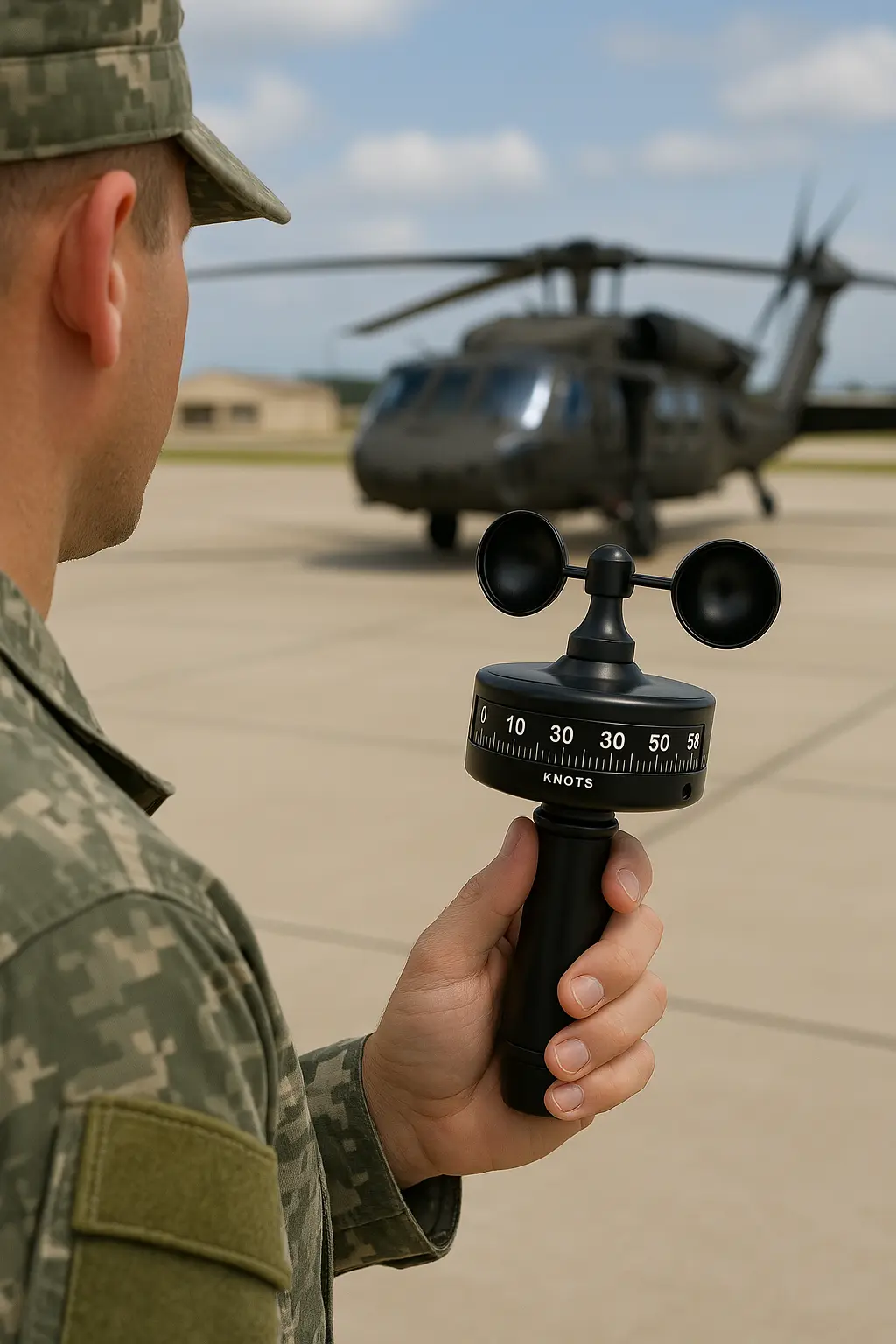Description
Manufactured to British Meteorological Office specifications (ref. 1096), this robust instrument is made from non-ferrous metal and calibrated in a wind tunnel for maximum accuracy. It is supplied in a convenient carrying case, which offers both protection and portability.
The IM159 Mechanical Handheld Anemometer gives instantaneous wind speed readings on an analogue scale. It can be calibrated in knots, metres per second or miles per hour (please specify which scale is required when ordering).
The IM159 is ideally suited for use as a contingency device in case of failure or unavailability of automated sensors. It complies with Civil Aviation Authority CAP437 regulations (Standards for Offshore Helicopter Landing Areas).
It contains no electronic parts and is safe to use in explosive zones.
A calibration certificate with test results can be supplied with this product. Please indicate if this is required at the point of order.
To maintain accuracy of results, it is recommended that the IM159 is periodically returned to the manufacturer for servicing and calibration (see CAP437 chapter 6, section 4.6).
What is a Handheld Anemometer?
A handheld anemometer is a compact, portable device used to measure wind speed and, in many cases, additional weather parameters like temperature and humidity. These devices are widely used across industries and recreational activities due to their convenience and accuracy.
Handheld anemometers work by capturing wind through a sensor or a rotating vane. The captured wind data is then displayed digitally, making it user-friendly even for non-experts.
How Does a Handheld Anemometer Work?
The Core Technology Behind the Device
Most handheld anemometers rely on rotational or sensor-based technology. The wind’s force moves parts or influences sensors, translating into measurable data.
Sensors and Measurement Mechanics
Modern devices use sensitive electronics that convert airflow into digital readings. Advanced models integrate additional sensors for multi-parameter weather data.
Calibration Processes
Regular calibration ensures the accuracy of the device. This can involve comparing its readings with a trusted standard or using specialized equipment.
Advantages of Using a Handheld Anemometer
Portability
One of the standout features is its lightweight design, allowing users to carry it effortlessly in pockets or backpacks.
Ease of Use
With intuitive controls and digital displays, even first-time users can operate handheld anemometers without prior training.
Versatility
From meteorologists to outdoor enthusiasts, these devices cater to various needs, proving their adaptability.











